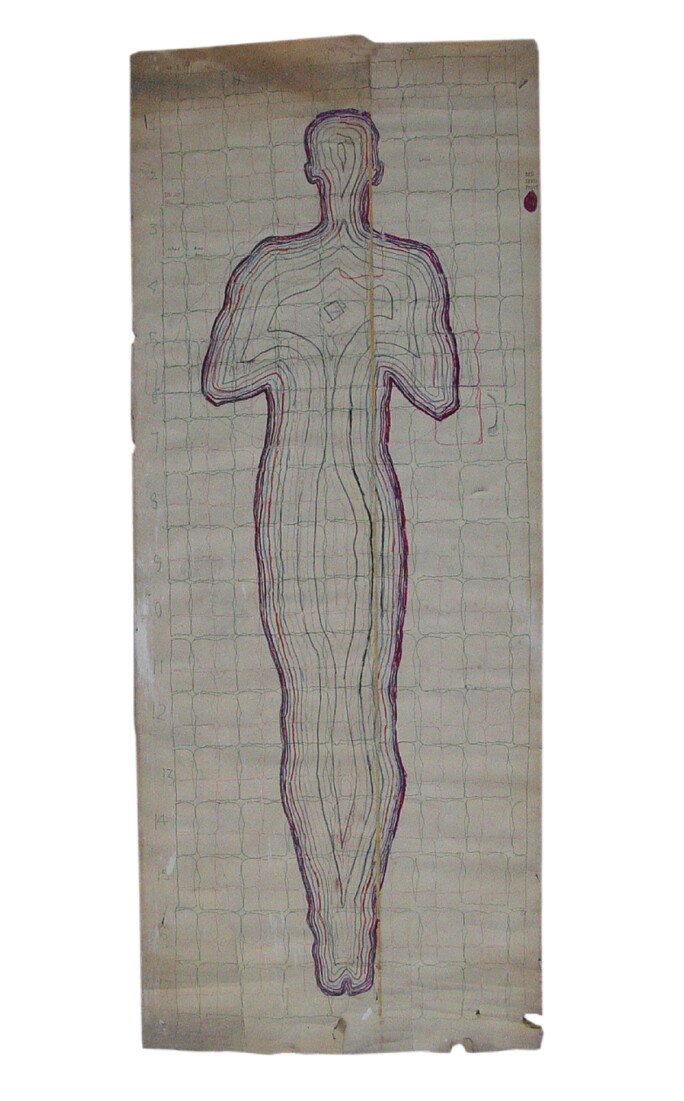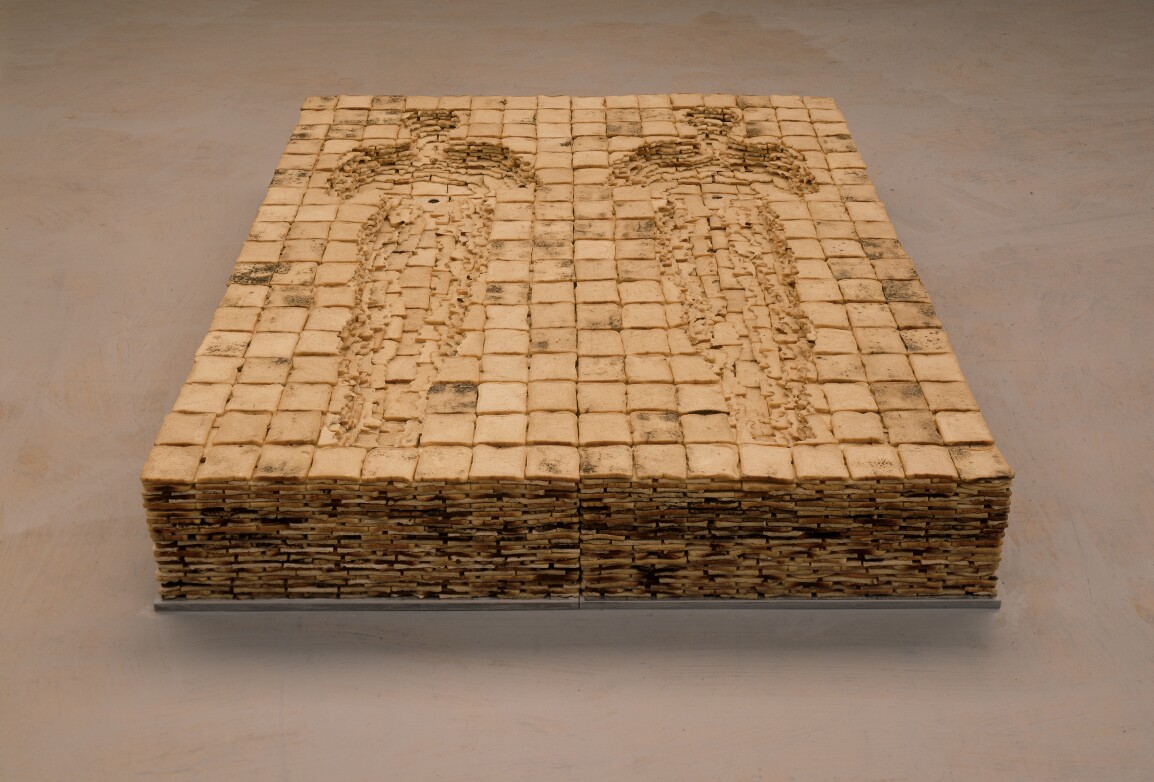M other’s Pride III is an important example from Antony Gormley’s ‘bread works’ series, which began in 1979 and continues to the present day. The series is part of the artist’s early and ongoing material examination of the body as a vessel and site of alchemical change. Mother’s Pride V (2019), the most recent work in this group, will be presented this Autumn as part of a major solo exhibition of the artist’s work at the Royal Academy of Arts, London.

Gormley began to work with in this unconventional medium whilst a student at the Slade School of Fine Art in the 1970s. The brand of bread used, Mother’s Pride, was a household name at the time – supplied in factory-produced loaves, bleached white and ready-sliced.
As Martin Cagier-Smith notes: "it became in his hands a type of ready-made ‘found object’ which in time he began to manipulate in a direct way…biting into chunks to create shapes and forms" (Martin Cagier-Smith, Antony Gormley, Rizzoli, New York/USA, 2017, p73).
The artist explains: "If Michelangelo's Slaves are an evocation of a neo-platonic idea of the struggle between spirit and matter, if they suggest that the work of a sculptor is achieved through physical prowess and genius, with the ability to impose some spiritual form on inert, intransigent matter, then I thought that the reverse was just as interesting. That somehow, that the thing that we each do at breakfast is a transformation of matter into mind. Eating is an alchemical transformation. I made a number of works using bread; a substance that lies outside for a while then enters the body and then becomes the body."

Gormley’s bread work, Bed, (1980–81), which is now in the collection of Tate, London, marked the first time that the artist’s body appeared in his work purely as a void left by the marks of his own teeth. 8640 slices of Mother’s Pride bread (minus those he ate in making the negative spaces) were dried and dipped in paraffin wax before being stacked and layered to create two entombed forms that are at once encased in a sarcophagus and at the same time a site of growth.
“Sculpture has traditionally been about imposing mind over matter by an act of intelligence and will. I was looking for a more natural process, and eating is the primal process by which matter is transformed into mind.”

The simple form of Mother’s Pride III again imposes the memory of a body but here it is expressed as a simple silhouette on a single layer of bread, it is a body hunched, implying an awareness of fragility through exposure rather than protection.
As Lynne Cooke has described: "Both point to the way in which man consumes to survive and survives by destroying. This and related themes, such as the debate between using and consuming, presence and absence, natural and man-made objects have been treated in various ways in Gormley’s work. They stem from his preoccupation with the nature of the world, and man’s role in it, indicated through his relationship with objects as well as with space and site". (Lynne Cooke, in Antony Gormley, Salvatore Ala Gallery, Milan/Italy and New York/USA, 1984, p43).




